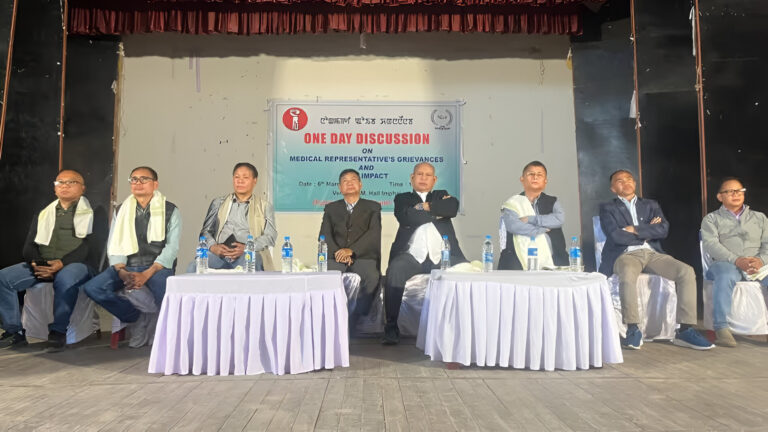Illegal Immigration Threatens Manipur’s Identity and Stability: Former CM N. Biren Singh’s Alarming Revelations
Summary of the News Article
Former Manipur Chief Minister N. Biren Singh has raised serious concerns about the state’s demographic changes due to illegal immigration, particularly from Myanmar. He emphasized that the unchecked influx threatens Manipur’s cultural identity and stability. Singh highlighted the emergence of numerous unauthorized villages and the strain on resources, urging immediate action to address the issue.
The Full Story: Illegal Immigration and Its Impact on Manipur
1. A Crisis Unfolding: The Influx from Myanmar
Manipur, a northeastern state of India, shares a 398 km porous border with Myanmar. This unguarded frontier has become a conduit for illegal immigration, especially following Myanmar’s 2021 military coup. Thousands have crossed into Manipur, seeking refuge but often without legal documentation.
The Free Movement Regime (FMR), which allowed border residents to travel up to 16 km into each other’s territory without a visa, was suspended in June 2021 due to security concerns. However, the lack of stringent border controls has continued to facilitate unauthorized entries.
2. Demographic Shifts and Emergence of Unauthorized Villages
The influx has led to significant demographic changes in Manipur. Former CM N. Biren Singh reported the emergence of 996 new villages since 2006, attributing this “unnatural growth” to illegal immigration. These settlements have often been established by clearing forested areas, leading to environmental degradation.
Satellite imagery and ground reports have confirmed the rapid expansion of these unauthorized villages, particularly in districts like Churachandpur, Kangpokpi, Tengnoupal, and Pherzawl. The establishment of these settlements has strained local resources and disrupted the social fabric of indigenous communities.
3. Strain on Resources and Indigenous Communities
The sudden population surge has placed immense pressure on Manipur’s limited resources. Public services like healthcare, education, and employment opportunities are stretched thin. Indigenous communities, including the Meitei, Naga, and Kuki tribes, express concerns over cultural dilution and economic marginalization.
The competition for land and resources has exacerbated tensions between locals and immigrants. Instances of land encroachment and illegal activities, such as poppy cultivation, have been reported in areas with high concentrations of unauthorized settlers.
4. Government’s Response and Measures Taken
In response to the growing crisis, the Manipur government has initiated several measures:
- Identification Drives: A cabinet sub-committee was formed to identify illegal immigrants. In 2023 alone, 2,480 unauthorized individuals were detected before the outbreak of ethnic violence halted the campaign.
- Biometric Data Collection: Efforts are underway to collect biometric data of suspected illegal immigrants to aid in identification and monitoring.
- Deportation Initiatives: The state has deported several groups of illegal immigrants. For instance, in January 2025, 26 Myanmarese nationals were sent back to their country.
- Border Security Enhancements: Plans are in place to fence the Indo-Myanmar border and establish additional police outposts to curb unauthorized entries.
5. Challenges and the Need for Unified Action
Despite these efforts, challenges persist. The vast and difficult terrain makes border surveillance arduous. Moreover, political and ethnic divisions within the state complicate consensus-building on immigration policies.
Former CM Singh emphasized the necessity of unity among all communities to effectively address the issue. He warned that without collective action, the state’s identity and stability remain at risk.
Frequently Asked Questions (FAQs)
Q1: Why is illegal immigration a significant concern for Manipur?
Illegal immigration has led to demographic shifts, resource strain, and cultural tensions, threatening the state’s identity and stability.
Q2: What measures has the Manipur government taken to address the issue?
The government has initiated identification drives, biometric data collection, deportation of unauthorized immigrants, and plans to enhance border security.
Q3: How has the influx affected indigenous communities?
Indigenous communities face competition for resources, cultural dilution, and economic marginalization due to the sudden population increase.
Q4: What challenges hinder the effective management of illegal immigration?
Difficult terrain, political divisions, and limited resources pose significant challenges to border surveillance and policy implementation.
Q5: How can unity among communities help in addressing the crisis?
A unified approach ensures cohesive policy-making, effective implementation of measures, and fosters social harmony to tackle the complex issue of illegal immigration.




